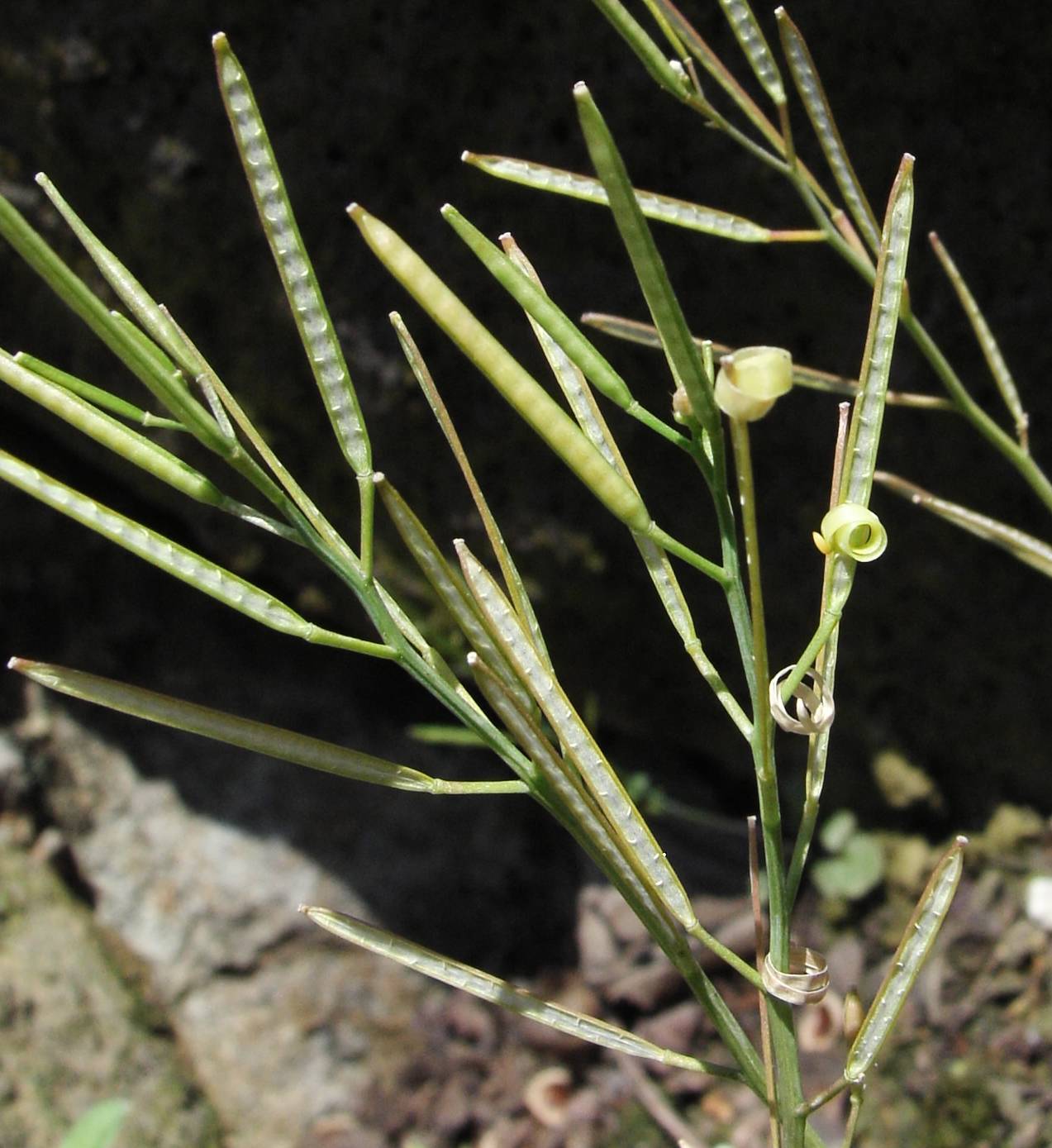 |
| Asclepias (Milkweed), a dry fruit, opening to release seeds |
Regardless, I think this photo is ideal for getting a feel as to what a dry fruit is and how it differs from a wet fruit. Think back to the diagrams of the wet fruits: you can clearly see the pericarp (comprised of the exo, meso, and endocarp) is much thinner on the milkweed, most noteably lacking that characteristic layer of fleshy mesocarp we saw in all the wet fruits. Though the pericarp still covers and contains the seeds in a dry fruit, it is not attached to them nor does it hold them in place, leaving the seeds to freely disperse as soon as the fruit opens.
 |
| The peanut, a legume. Taken from Wikipedia's Peanut entry as I have no peanuts in the house. .. and even if I did there would be no shells. Pericarp just gets in the way. |
The Milkweed and Peanut are both examples of simple dry fruits. Simple, in this case, means the fruit is the result of only one ovary maturing, and that two or more have not combined to form an aggregate fruit.
The Milkweed fruit is a follicle, a simple dry fruit that splits down one side to release the seeds. The peanut is a legume, a simple dry fruit that splits along both sides when releasing the seeds.
Now. though you probably believe me that the peanut fruit splits down both sides, you might be scratching your head as to why I'm saying the milkweed fruit splits down one side, since the photo of the follicle above clearly shows it apparently split in at least two places. Remember though, that this distinction is made when the fruit first opens, and in the photo above, the follicle had probably been present on the plant for quite a while. I'll try to get a photo that better shows this at some point (and not just because I feel bad for maybe stealing Tom's), but for now you'll have to take my word for it... well, I'll back it up with a story.
Back when I first started working at the Arnold Arboretum after finishing my undergrad, I had collected a few of these follicles (well, back then I knew them as "seed pods") off milkweeds as they were ripening, with hopes to do something with them later I guess (it was a flawed plan). I put these follicles in my locker where I apparently planned to leave them indefinitley (again, flawed plan). About two weeks passed, and I suddenly noticed one of the follicles had looked like it burst. It had just sort of popped, like an overstuffed suitcase that wasn't properly latched shut. Now is when the flaws in my plan should have become evident. The follicles were beginning to burst open to disperse their seeds, and one can easily tell by looking at the seed that the dispersal mechanism is "wind". All they needed was a source... like for example every time I opened or shut my locker door.
It took a good two to three months for the dispersal situation to die down enough for me to feel confident I could carry those follicles to the trash without making a bigger mess in the process.
Moral of the story: milkweed fruits split down one side. Keep them in a bag.
 |
| From Wikipedia's entry on the silique |
Moving on, there are also two dehiscent fruits resulting from multiple carpels: the capsule, and the silique. Now these are considered simple fruits as well, since even though more than one carpal is involved, the carpels have not fused together tightly enough to produce a true aggregate fruit such as a pineapple or strawberry.
A silique is characteristic of the mustard family, a long fruit resulting from two carpels. The individual seeds are held in that central portion until both sides of the fruit split off, allowing their release.
Last but most common, is the capsule. It is also the result of multiple carpels, but in this case those that were fused together in the a flower as a compound ovary.
 |
| The Poppy, displaying a compound ovary. We can make out theanthers to the outside, but the female part of the flower is a far cry from the distinct stigma/style of the Amaryllis. From Wikipedia entry on the Poppy |
 |
| And from the same entry, the capsule ready to burst. |
So that's it for deshicent fruits. In summary: If it's from one carpal and splits down one side, it's a follicle, if both sides, it's a legume. If it's from a compound ovary, it's a capsule, and if it's a long fruit of a mustard resulting from two carpels, it's a silique.
Don't worry too much though if you're having a little trouble with this... My guess is that you're feeling you'd have trouble looking at a fruit and guessing how many carpels the flower that proceeded it had. I wish I had a few good cross-section photos of capsules vs. follicles to show which might make it easier, but for now I'll say the capsule will usually look a little more "full" on the inside than the more empty milkweed pod we started the entry with. Regardless, my main hope here is to have us gain an appreciation for these different types of fruits. We can work out the details later.
Next time I'll cover the indehiscent fruits, and will have a photo that is indisputably mine.

No comments:
Post a Comment